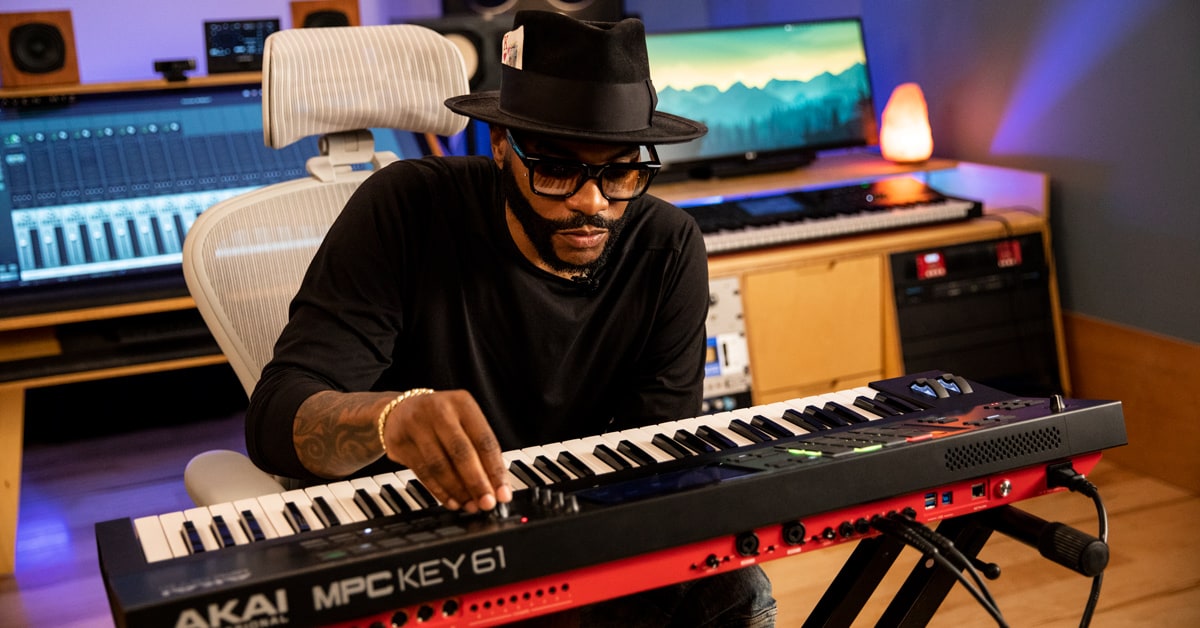The MPC Key 61 takes decades of industry-standard sequencing and sampling power, and for the first time, adds a keybed for unprecedented feel and creative control of its powerful synthesis capabilities. Akai Professional painstakingly designed the touchscreen interface to deliver an aesthetically elegant, intuitive navigation of instrument engines and Flavor effects plug-ins—all with the needs of modern music creation, production and even live performance in mind.
We sat down with Andy Mac, the content and A&R manager for Akai Professional, who keyed us into the ethos and creation of the MPC Key 61.
So, what made Akai say it’s time to put keys on the MPC platform?
Andy Mac: When we think about the MPC workflow, it’s been around for three decades. But the funny and interesting thing is when you look at a lot of the famous MPC artists over the past 30+ years, it was always tied to some type of keyboard, you know? When we go through the likes of Teddy Riley, Scott Storch, Rodney Jerkins, right, they were all using the MPC sequencer and the sampling, but they were always using it with a keyboard, sound module and other stuff. It was always the most go-to sequencer—and that’s putting the sampling aside. It was always a huge, powerful sequencer, and you had these sampling capabilities and all of the MIDI functionality. And there was nothing that could touch it from a sequencing perspective. So, it made so much sense for us to turn this into a full-blown production synthesizer. We’d been working on developing plug-in instruments, and we could see a trend of people wanting more sounds with their MPC. It was growing outside of just sampling-based sequencing. That was one of the mindsets that informed developing this into a full-grown production keyboard.
Looking back at the MPC’s success, what do you think was so appealing about its sequencing capabilities as compared to other products in the soon-to-explode keyboard workstation category, which included products like the M1, and the rapidly evolving world of DAWs?
I think, for me, the sequencer inside of the MPC—it’s stood the test of time. A lot of products have tried to imitate what it does, but it’s the simplicity, right? The actual product itself allowed people, who couldn’t necessarily play an instrument, to start being creative in so many ways, because they could sequence things. So, if you weren’t a musician, you could sample guitars and all kinds of things, and start making music. As the platform has evolved, people started to use it for driving MIDI instruments—keyboards, sound modules and all these things. There was nothing quite like it from a speed perspective, and I think it also gave this human aspect to it. And don’t get me wrong, I did some stuff on Ataris. I still use Logic. But there’s a very different type of musical mindset when you’re using standalone. It really does pull you away, and it makes you way more creative because you’re not diving through endless menus all the time.
It was funny. I first turned on the MPC Key 61 about a year ago, and when I started getting into the whole sound design side of it, it reminded me of the first time I’d turned on a KORG M1 when I was like 17. It was that joyfulness of having something so compelling that I hadn’t experienced before—having sounds and sampling, and all this technology integrated into one unit.
Outside of the sheer functionality and workflow, what is it about MPC sequencing feel-wise that you think appeals to people? Is it just the timing?
The “feel” is a very interesting one, because I think people are like, “Oh, I love the feel of it.” And I think everyone has a different feel when they use it. It depends on if you turn quantizing on or off, and how you push the notes back and forth.
I think what’s great is if you listen to the music that’s going on today, it’s very quantized. It’s 16th notes, it’s 32nd note triplets—all that stuff going on. And there’s not so much movement with the notes in the drums compared to melodics. Where if we kind of go back to the ’90s period—we’ll go back to Dilla—there were two aspects of it. Not only was some of the stuff unquantized; it was also how he used to chop some of the samples. Not everything was precise.
There are so many different aspects that go into the groove and the feel of an MPC. But as soon as you start applying the MPC swing, you can really create grooves that I find are very rigid to try to do on the computer.
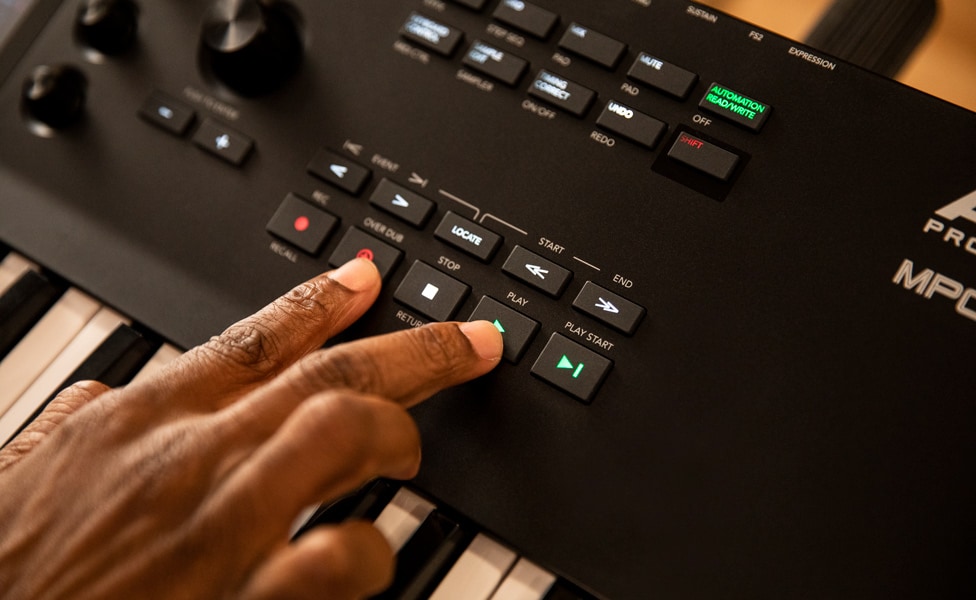
As you think of the MPC Keys, even just the addition of a keyboard, how do you imagine that can change music making for people that might have just been using a pad-based method of music production?
Oh, in so many ways, because the music that we listen to—that is embedded into the culture of the brand—is very reliant on drums and hard-hitting production. You sit down and you create an amazing melody. Then you go straight into drum mode and the whole thing just starts to come together. It doesn’t feel disjointed. I found myself not using as many tracks as I would on a DAW, and I was more focused on melody, chords, and timing and rhythm before I even got to the drums, you know? It completely changed my focus on playing in so many ways, and it’s hard to describe that.
Sometimes, if you’re sitting in a DAW, there’s loads of tricks and “get out of jail” cards that you can do. Oh, “I can use this scale mode or whatever, right? I can pull chord MIDI and everything in.” But when you’re sitting in front of the keyboard, it’s just you and the keyboard. You’re inspired by a sound, you find a melody, you hit record, you lock that melody in and you start laying over that. And then, you bring in the drums and your sampling, and all of a sudden, within 15 minutes, you’ve created something magical, and you’re onto the next beat straight away.
The really interesting fact of this is that, yes, we have an incredibly powerful sequencer, but not at one point did I ever look at the screen. It’s quite fascinating because the way that we’ve designed the OS, you’re jumping between tracks, and all you’re doing is hitting the record button. It kind of takes you back to that period of using your ears musically again. And that’s what I loved about it.
Pivoting to the sounds a bit, what were the most important instruments that you felt you needed to develop to make this particularly attractive to keyboardists?
So, the first thing we needed to achieve was to make very modern sounds that really inspire you. I remember from the days when I was using sound modules, it was like, “I’m inspired by whatever sound I listen to.”
The first thing we created was Fabric XL. Fabric XL is really your bread and butter. Everything that you ever need is inside Fabric XL. It’s basically a multi-sample oscillator. It has a third oscillator, which is like a percussive oscillator. It has nine filters inside, envelopes, LFOs, and it’s very easy to use, but it’s very elegant. It also has this effects section called Flavor, that allows you to add vinyl noise simulations, flutter, chorus and everything. It’s one of those plug-ins that allows you to just dive in if you’re not very experienced with sound design and create something amazing. Or, if you do love sound design, you can start messing with all of the different layers. You can really go into the sample-based wavetable and make your own sounds to that extent.
We wanted to make it easy to use, but also sonically incredible. As soon as you go through the patches, you’ll find everything you need. We spent a lot of time researching sounds, thinking about the libraries—the categories as well—and what type of sounds people are using right now. When you look at a lot of these synths that we’ve spoken about, a lot of these sounds have been around for a long time, you know? And DAWs tend to be the go-to for where people want modern sounds. They use a lot of effects to achieve that. So, this is where MPC Key comes into its own, because we have a lot of modern effects. You can take a traditional Rhodes-type sound, and really give it that RC-20 vibe and make it extremely modern—just by turning a few knobs within the plug-in and adding flavor.
One of the things that really blew Scott Storch away was the sonic quality of the keyboard. It really was the pinnacle for us when we made those sounds. And there’s a lot of sounds—put it that way. So, Fabric XL is really your go-to for everything that you need for modern production.
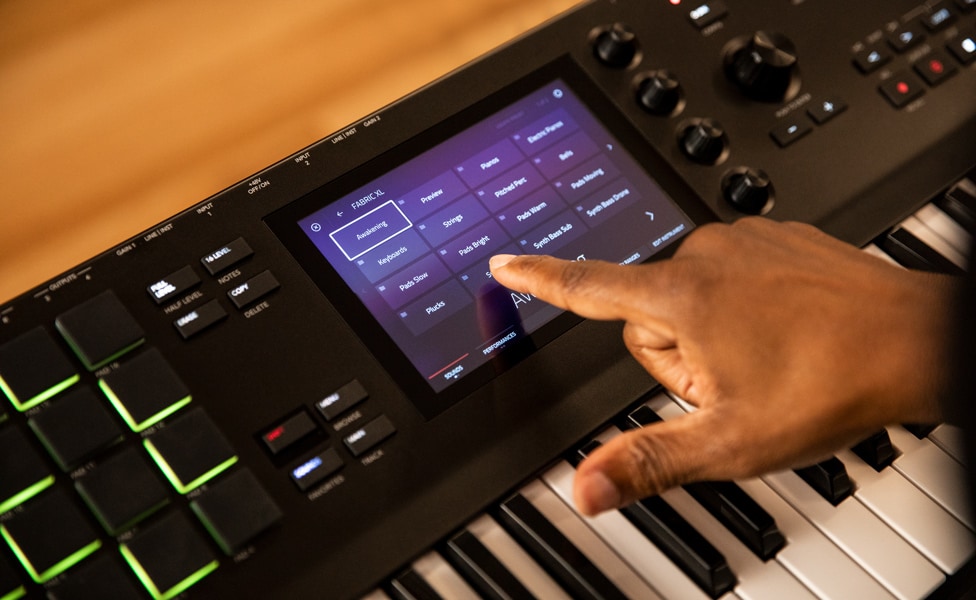
Just to verify, that’s PCM-based multi-sample?
Yeah, and you’ve got nine different filters. Fabric is kind of like having all the patches you need in the box.
So, it sounds like it was a mixture of a little bit of that bread and butter—some sounds that you just have to have, and then a little bit of fun—a bit of, “Let’s see what we can do with this thing.”
Pads are a very important part of textures today. So, we got different types of styles of pads, from moody to dark to motion, and they’re easy to find in the category list. Then, you’ve got drone basses through to more commercialized synth leads. If you want those go-to synth leads, you can get to them quickly. But, if you want the quirkier stuff, you can also find that and be inspired. It’s got a huge variety for everybody.
What are some of the other new instrument plug-ins?
We have OP-X4, a four-operator FM synth with 23 filter types, six envelopes and over 670 presets on board. That’s where you can go into a lot of in-depth synthesis if you’re really into FM sound design. And then, you can save your own presets into the browser. It’s a virtual synth as well—not sample-based at all.
And for someone who may not be familiar, what are the sound qualities for FM-based synthesis?
Well, you would definitely hear a lot of those iconic soundscapes that you get from FM. You can hear them on the pianos. You can hear them on those iconic basses. So, I would say that when you listen to the music scene right now, it’s quite heavily influenced by the ’80s, and you will find a lot of that architecture inside OP-X4 that’s very pleasing on the ear.
It’s got that vibe very quickly, right?
Yeah. Very quickly. So, you can go from Stranger Things to The Weeknd in a few seconds. But funny enough, I played Kate Bush stuff to my wife about a year ago. It was "Cloudbusting." I was like, “Listen to the strings on that!” And she’s one of those artists that I’m so glad that is being discovered again.
Can you tell us a little bit about Stage Piano?
That’s a sample-based plug-in that gives you four different models of piano. Yamaha C7, Steinway, Bechstein upright and classic Workstation. We wanted something that really gave you the sense of a grand, you know? It’s a very, very rich and warm-sounding piano that you can go in—you can control the mechanics, you can add reverb, delays and really kind of make it your own as well. But I think with any keyboard, you always expect to have a state-of-the-art piano. See, it was very important for us to really make an elegant one that has a gorgeous interface as well. But, also, we’ve added the Flavor effects inside. So, again, you can very quickly start to take it into realms where you might not hear a piano sound.
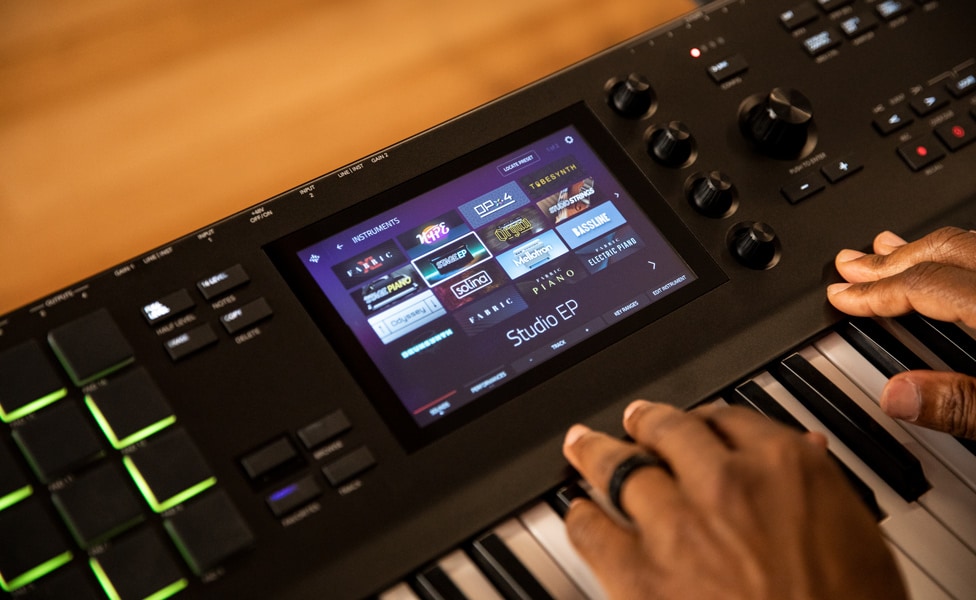
You also have instruments for electric piano and organs, too.
We have a sample-based electric piano plug-in instrument called Stage EP. Like Stage Piano, you can go into the mechanics, the articulation. You can go through the Suitcase, the Rhodes, the Pianet. You can go through all five models and into the amp modeling. You can go into the Flavor plug-in, really recreate each of those instruments and make them your own as well.
One of the other elements is the percussive noise, the mechanics where you can go in and control those. So, if you want the knocking sound or whatever, you can decide how much of that realistic noise you want. And then, once you start going into EQs, the flavor and all these different aspects of the plug-in, you can take it somewhere else very quickly as well. Or, if the preset’s not quite where you want it, again, it’s very easy to modernize it, or to dim it down, make it smoother, take some of the amp simulation off. So, we’ve tried to make it where you’re not going through endless menus where you’re like, “Oh, I don’t understand this—I’m not great at sound design.” Everything has been carefully designed, so that it’s inviting to go to each menu.
We’ve worked very hard to deliver loads and loads of different types of presets for Stage EP.
You’ve also got Studio Strings. You can go into this and basically be a part of the orchestra. You can go into the violins, cellos. You can do your whole crescendos. You can really customize it and add in all these modern effects, take it somewhere different, or you can have all those real bread-and-butter kind of big string sounds.
The last one is Organ, which is an advanced drawbar organ. What’s great is that you’ve got your drawbars all on the touchscreen, so you can really open up the organ. We have rotary simulation as well. It’s one of those plug-ins that a lot of people would want for gospel and R&B. Those types of sounds are crucial for some types of keyboard players.
As you were developing MPC Key 61, were there changes that you made to the underlying OS to be able to provide a better experience for someone playing keyboards?
There were a few things that we needed to implement. The first thing was a dedicated sounds page. Up until then, we had some instruments onboard. You could just go to the browser, load them up via a plug-in—and when you only had a few to deal with, it was fine. But for when you’re dealing with a whole bunch of new plug-in instruments and you want to find sounds quickly, we knew that we needed to come up with a whole new browsing system.
We wanted it to be appealing, so when you look at the screen, you can get to wherever you want. If you want to go into editing the plug-in, you can go to that straight away. If you want to save a preset, you utilize the touchscreen. You just hold it down, and it populates your favorite sounds. So, it’s very thought-out.
Another thing was the key splits. A lot of people like to use layers of sound, and we wanted to utilize the touch technology with all these instruments and the keybed, so you can easily go, “Right, I’ve got three or four plug-ins now. I can simply touch my screen, slide my fingers across the key ranges and move exactly where I want each one of these plug-ins to be across the key span.”
From there, you can refine it with MIDI filtering. You can go into each track and say, “On this layer, I don’t want modulation, sustain, pitch bend or whatever. But, on this layer, I want to express the aftertouch.” When you’re a sound designer or you’re creating layers, you can start doing the most amazing things at a touch of a button by utilizing all these types of filters. It’s something that I’ve personally not used in my sound design years. I was more of a preset guy, and I was fascinated—and found it really intriguing—being able to go into this on such a simplistic workflow and go, “Actually, I don’t want velocity on this. I don’t want aftertouch on this, etc.”
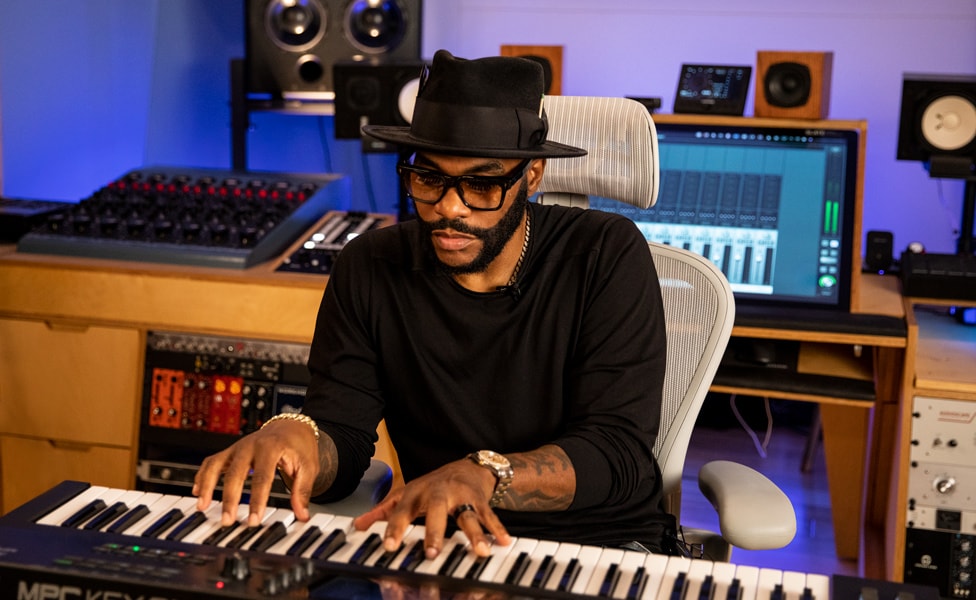
To your point, you might want aftertouch or velocity affecting the articulation of a saxophone or a trumpet to make it growl a bit. But, if you also have strings layered in there or piano or something, or even an EP, you might not want that on those sounds.
Exactly. And you can go into each plug-in. You can change how you want the mod wheel to work. You might want it to affect LFO, etc. When I was making sound design for the 2.11 video, I had this great, iconic synth-y brass sound, and I had a couple of pads underneath, but I just wanted the brass to hit hard without sustain. So, you turn the sustain off on the brass, keep sustain on the pedals, but add modulation on everything else. Suddenly, you’re in a whole new world of soundscape. And what I think is fascinating about this is that it introduces people to features that they might have been afraid of using or might not have understood, because you can really find these things very easily with our workflow.
With all these new features, and MPC Key 61 generally, how do you think this will impact existing MPC users?
Anyone who is interested in adding serious levels of sound design into their production will see the benefits straight away. To anyone who wants to learn how to play the keyboard—that wants to get into melody, but also integrated with high-level sampling and sequencing—this is going to appeal as well. I think if you’re just a traditional beat maker, and you’re just doing conventional sampling, you can still do all of that. It’s still got all that classic workflow, but what excites people about this is that they can now actually learn an instrument.
If someone walks into their local Guitar Center and decides to demo MPC Key 61, what sounds would you recommend for some of these new instruments?
You’d be blown away by pretty much anything that you go to. So, if you walk up and you’re a piano player, and you want to hear the piano, you start off on the sounds page. You just hit Stage Piano and that’s it. You’re there already. And you’ll be inspired straight away.
If you’re someone who wants to dive into much more modern sounds, as soon as you go into Fabric XL, you go into those pads. All of a sudden, you’ve got that rich, warm texture that really puts you into a whole different perspective of sound design. If you want those dark, trap-type of pluck sounds that have a lot of dimension, you’ll find those instantly. In each plug-in, you can go into the previews, and we have the top 100 sounds there. Even when you go into something like Fabric XL, and you go into the pianos, we’ve made sure that we don’t just add a grand piano or a studio piano. We’ve blended it in with sound design that is abstract, so you’ll go, “Wow, I wasn’t expecting a piano to sound like that.” That’s what we really wanted to achieve with sound design. We wanted it to present you with things that you wouldn’t necessarily hear when you’re turning a dial. You’ll want to make something with that straight away.
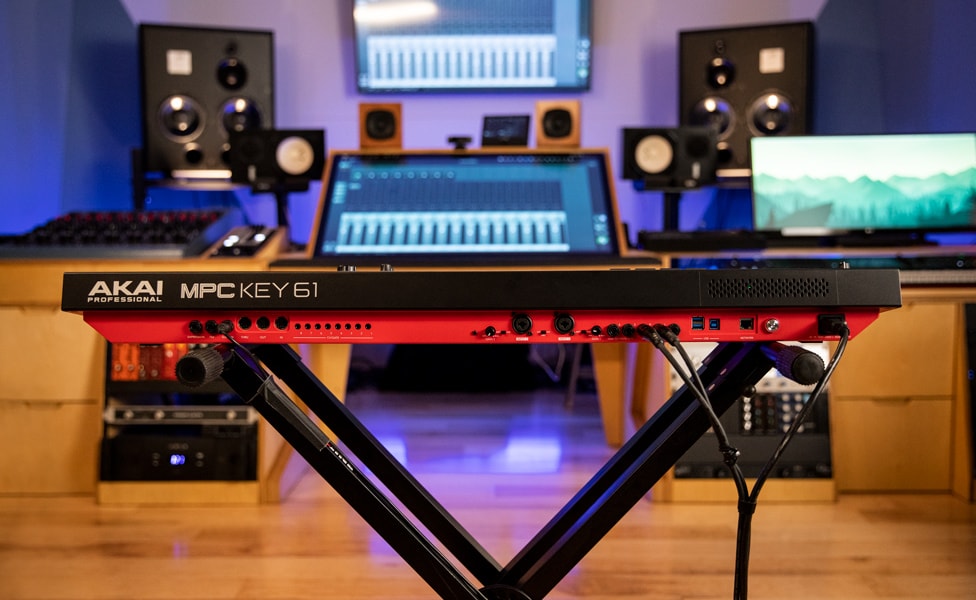
After the years that you’ve been developing MPC Key 61, is there one artist that you handed a prototype to, they started playing it, and you went, “Oh, wow. I never thought I’d hear or see that.”?
Scott Storch. In my 16 years of working for Akai, that was the moment for me when something magical happened. We knew we had something special, but when I had my first meeting with Scott and the keyboard, he cemented it.
When you get sign off from one of the most prolific keyboard players in the world that falls in love with your product, that’s a feeling I can’t explain. To see the joy on his face and hear the music he was making with it was inspirational. It really was an incredible moment for the team. All of this hard work, all of this vision that we had—to put it into the hands of (one of) the most prolific, influential keyboard players out there—just blew our minds. It really did.
Was there anything in particular that he was drawn to?
All I remember were the first words that came out were, “Oh, my God, the sounds are incredible.” He was an MPC guy already, so it was the sounds that blew him away.
Every idea, every record he makes is inspired by a sound, and it’s a sound that creates the melodies. We’ve been making these products for a long time. We have great resources internally. We have incredible programmers, engineers, and with all that said, when you hear something come from someone whose music you’ve grown up with, that has influenced entire generations … when they fall in love with your product, that’s where all the hard work really does pay off.
There are a few moments in our careers when something special comes along that really does change things and pushes technology. It creates a new workflow for people to experiment musically and to push their craft. I feel that we’ve come to the market with something where we’ve thoroughly considered what a producer, musician—live performer, keyboard player—would need today. With all our resources, how can we make a difference? How can we inspire someone to make their music even better? How can we give them access to tools that make sense and drive them to be better musicians?
This is just the beginning of a new journey. That might be a nice line to end with.
.jpeg)






